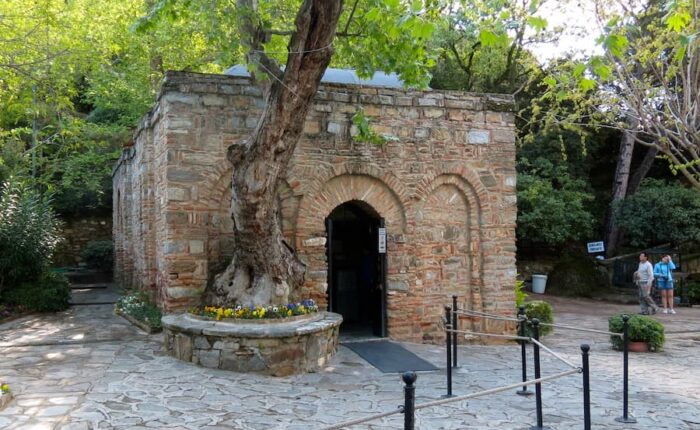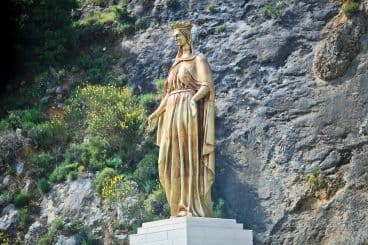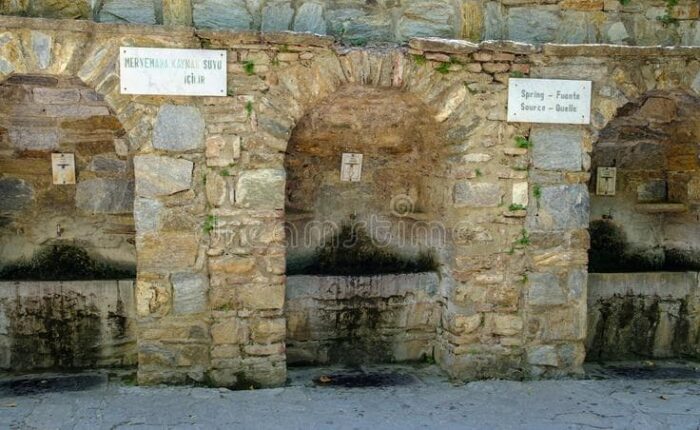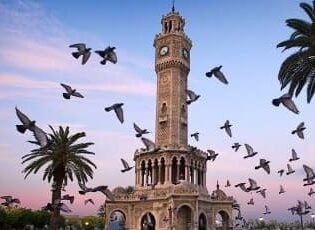
Izmir is a city on Turkey’s Aegean coast. Home of Ephesus, House of Mary, Pergamon and more. Its name was “Smyrna” in antiquity. That Anatolian City was later on in the control of the Ionians, Lidians, Persian, Alexander the Great, Romans then it became part of the Ottoman Empire in the 15th century.
Population of city is about 4.3 million which makes Izmir as the 3rd biggest city of Turkey after Istanbul and Ankara.
You can reach to Izmir by flight or buses from Istanbul and any other Turkish cities

Konak Square is like the hearth of the city and it is the busiest part of Izmir. ,Most of this busy square is occupied by the Governorate of İzmir Province, the City Hall of İzmir Metropolitan Municipality, the Central Bus Station, and the Yalı Mosque. İzmir Clock Tower, an old landmark built in 1901 is at the center of the square. Also, The square is also near Kemeraltı, İzmir’s major market (bazaar) district.
.
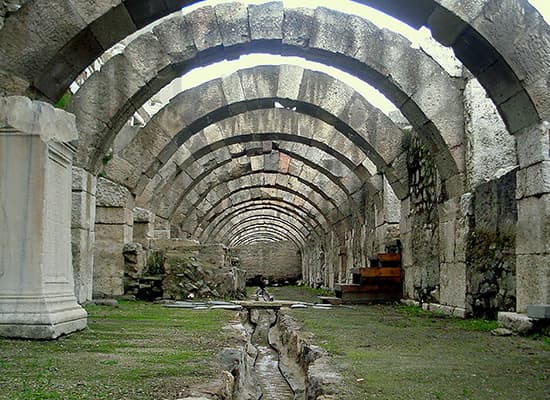
The agora was the center of life in ancient Smyrna. It dates back to the Hellenistic period. An eartquake destroyed it in 178. Roman emperor Marcus Aurelius rebuilt shortly . Also, You can walk to Agora, through from Kemeraltı – the bazaar section of the city – in 15 minutes.
The most impressive was the basement of Agora. Several Underground arches were built next to each other to support the above ground structures.
Back in the Roman time, it was the market where goods were sold. Also, slavery was common back in the Roman era, so it was used as a slave market at the same time.
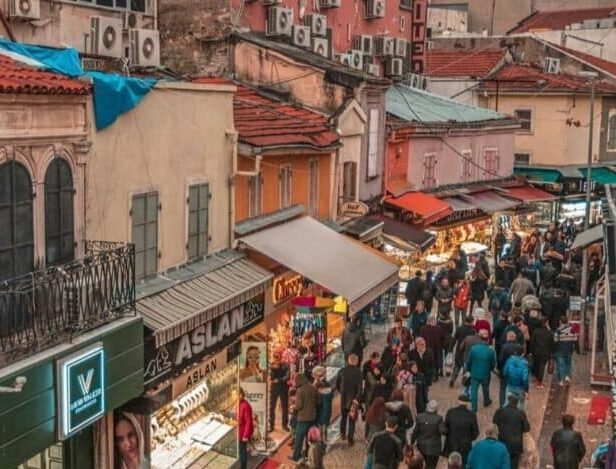
The district covers a vast area extending from the level of the Agora of Smyrna to the seashore along the Konak Square. Even back in the Roman Time, Agora was the market place of Smyrna. So, we can say that it has been a market area since from the Roman era.
Today, there are thousands of shops that sells mainly clothing, shoes and bags. But almost everything is sold in kemeralti. It is so colorful and such a place where you will feel the hustle and bustle of Izmir. Also, the neighbourhood became to home to serphardic jews who fleet to Ottoman Empire after Alhambra Decree
Pergamon was a rich and powerful ancient city. It is located 26 kilometres from the modern coastline of the Aegean Sea on a promontory on the north side of the river Caicus and northwest of the modern city of Bergama, Turkey.
During the Hellenistic period, it became the capital of the Kingdom of Pergamon in 281–133 BC. Then it became into one of the major cultural centres of the ancient world. Many remains of its impressive monuments are very famous and especially the outstanding masterpiece of the Pergamon Altar. Also, Pergamon was the northernmost of the seven churches of Asia in the New Testament Book of Revelation.
Acropolis (upper city) is the main site where the main structures of the city located. But on the other hand, Asklepion (Healing Center) is located on the flats of Pergamon and is about 3 km away from Acropolis. Also about 1 km at the south of Acropolis, there is a temple of Egyptian Goddess Isis or Serapis, called Red Basilica.
Acropolis is on the peak of an hill that is around 300 meters high. Therefore, If you have car or minivan, you can drive up to Acropolis. Or you can catch the cable car going up to the ruins.
Here are some of the ruins of acropolis.
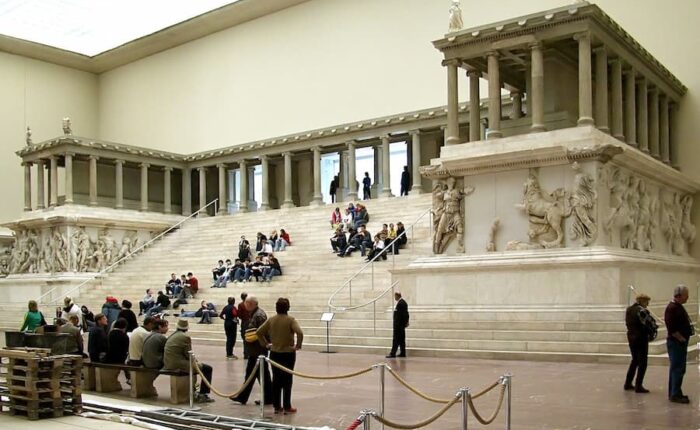
The most famous structure from the city is the monumental altar, which was probably dedicated to Zeus and Athena. The foundations are still located in the Upper city, but the remains of the Pergamon frieze, which originally decorated it, are displayed in the Pergamon museum in Berlin, where the parts of the frieze taken to Germany have been installed in a partial reconstruction.
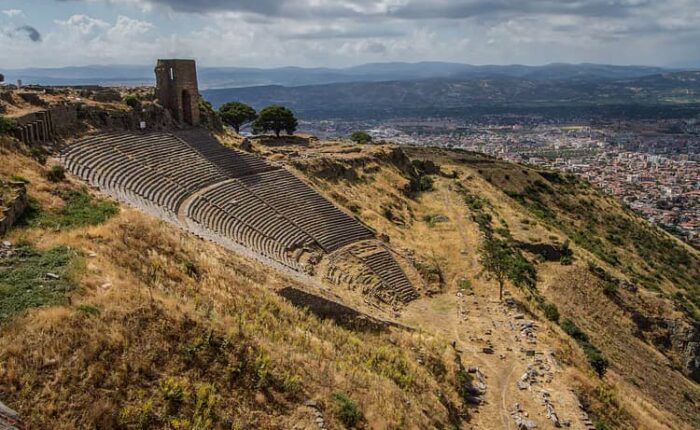
The well-preserved Theatre of Pergamon dates from the Hellenistic period – 3rd Century BC – and had space for around 10,000 people, in 78 rows of seats. At a height of 36 metres, it is the steepest of all ancient theatres.
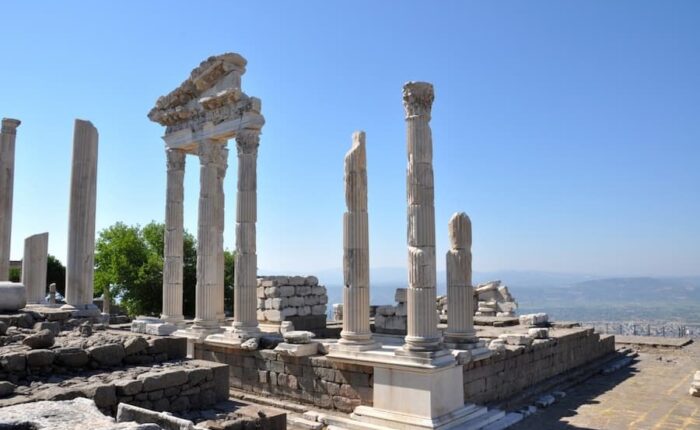
On the highest point of the citadel is the Temple for Trajan. The temple sits on a 2.9-metre-high podium on top of a vaulted terrace. It is a crypto-porticus. The temple itself is 18 metres wide with 6 columns on the short sides and 9 columns on the long sides.
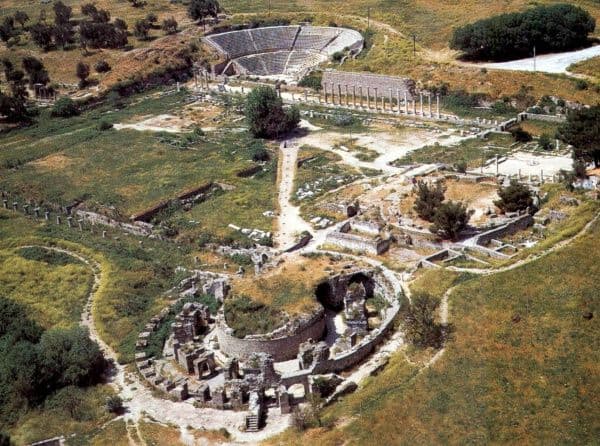
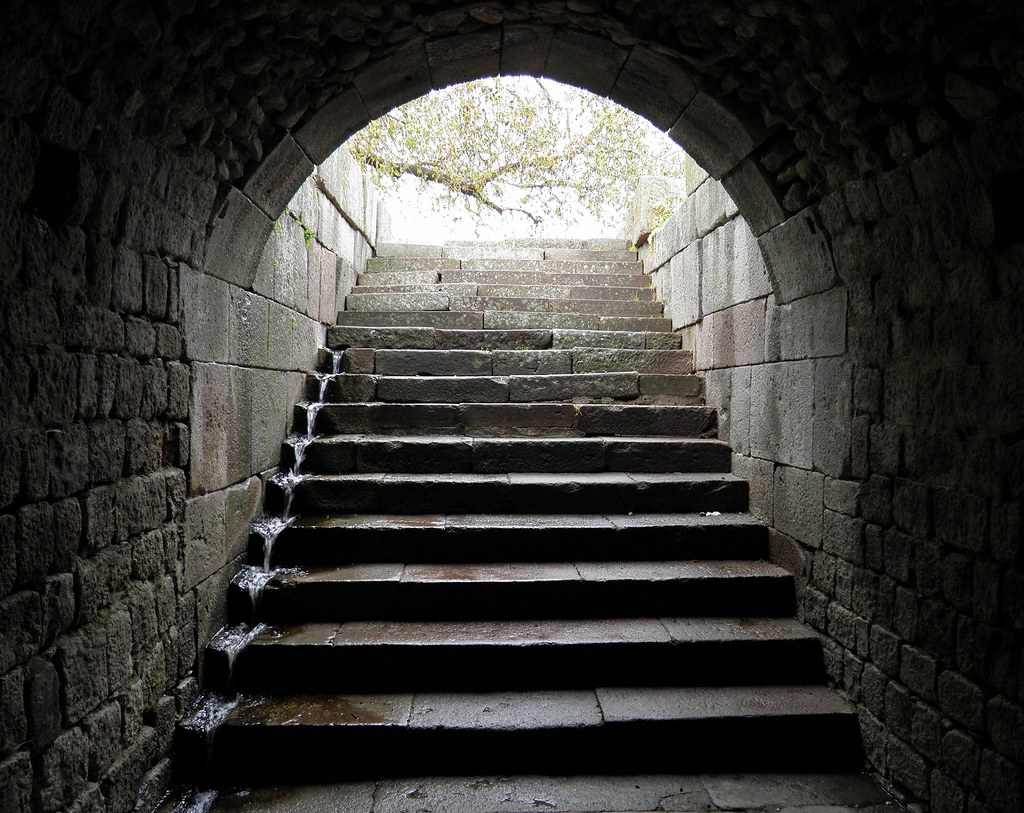
It is located about 3 km at the south of acropolis of Pergamon. You can approach the Asklepion along an 800 meter colonnaded sacred way. In this place people with health problems could bathe in the water of the sacred spring, and in the patients’ dreams Asclepius (God of Healing) would appear in a vision to tell them how to cure their illness. Galen, the most famous doctor in the ancient Roman Empire and personal physician of Emperor Marcus Aurelius, worked in the Asclepium for many years. Notable extant structures in the Asclepion include a the Roman theater, Propylon (main Entrance), a circular treatment center (sometimes known as the Temple of Telesphorus), a healing spring, an underground passageway and a library.
Pergamon, one of the most important health cities in the ancient world, is the hometown of Galen of Pergamon. He was the father of Pharmacy. Galen here took care of gladiators and Roman kings and made important discoveries in the field of Pharmacology.
the famous orator Aelius Aristides of the ancient times mentioned about the treatment methods in the Asklepion health center . Aristides was treated at Asklepion and explained the treatment methods in detail in his book Hieroi Logoi. They tried to threat with various methods such as putting them to sleep, listening to the sound of water, mud treatments, healing water treatment, cupping, diet therapies, therapy and music therapy in the sleep rooms.
Ephesus was an ancient city on the coast of Ionia, three kilometres southwest of present-day Selçuk in İzmir Province, Turkey. Driving from Izmir to Selcuk takes about 1 hour. The history of the city goes back to 3rd millenium BC and the oldest name for it was Apasa. This name was in the archieves of Hitites. Greeks started colonizing in the 7th Century BC. During the Classical Greek era it was one of the twelve cities of the Ionian League. The city flourished after it came under the control of the Roman Republic in 129 BC.
Majority of the ruins are from the 2nd Century AD
Also, Ephesus had an important role in the history of Christianity. Because, It was one of the seven churches of Asia in the Book of Revelation. Also,John wrote the Gospel in here. The city was the site of several 5th-century Christian Councils. House of Virgin Mary is at the boundary of ancient Ephesus at the summit of Bulbul Mountain.
The Book of Revelation provides descriptions of each Church.
Ephesus became reach and wealthy because of its harbour. One of the seven wonders of the world, Temple of Artemis in Ephesus was attracting the people to the city from all over the ancient world. Within centuries, harbour of Ephesus silted up and starting from the 3rd century AD majority of the population accepted christianity as their religion. As a result of this Ephesus lost its horbour and Artemis Temple was totally abondend.
When the Turks controlled the area in the 13th century, the city was just a ruin.
Today, Ephesus has 2 entrances for visitors, upper gate and lower gate. Starting the visit from upper gate and ending at the lower gate is more comfortable as it is hilldown.
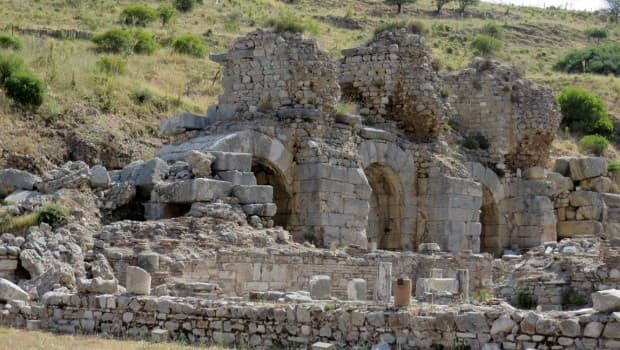
The ruins right across the main gate (upper gate) belong to the bath of Varius, dating to the Roman period. The construction dates to the 2nd century A.D It is built of cut blocks of marble and has three sections, frigidarium (cold room), tepidarium (warm room) and caldarium (hot room). The excavations have not been completed yet.
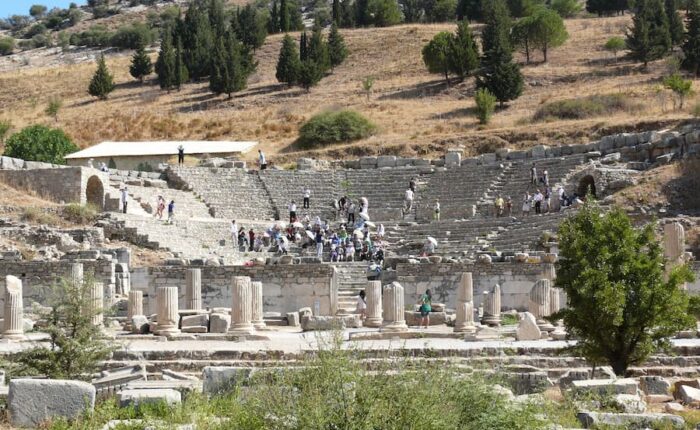
The mini theather shaped building , behind the basilica stoa is a Bouleterion. So, it was like the parliament building of the city where the important Ephesian aristocrats would meet to discuss matters of the city such as tax collection, building maintenance, construction and more. As an odeon, mainly musical performances took place here, too.
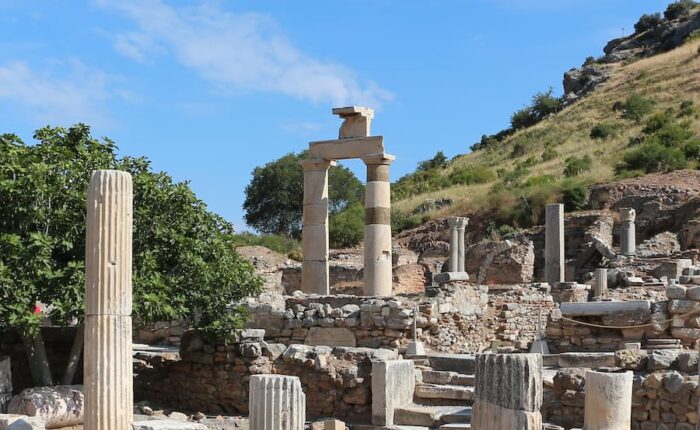
Prytaneion was like a council hall for religious ceremonies , official receptions and banquets. The sacred flame symbolizing the heart of Ephesus was kept constantly alight in the Prytaneion.
The priestress (curetes) were responsible for the eternal fire. The construction of the building dates to the 3rd century B.C, during the reign of Lysimachos. But the ruins of the complex dates to the Augustan age.
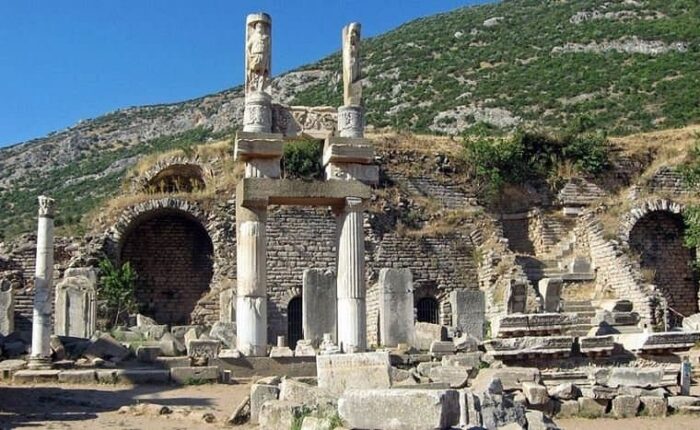
It is located at the Domitian Square. It was built on a high and wide terrace on vaulted foundations. The northern size of the terrace seems to be two-stories high, reached by stairs. The stairs are still visible today. The temple, built in pro-style plan, had eight columns on the short side and thirteen columns on the long side, and four additional columns in front of the cella. At the northern side there was an u-shaped altar, which is now in Izmir museum.
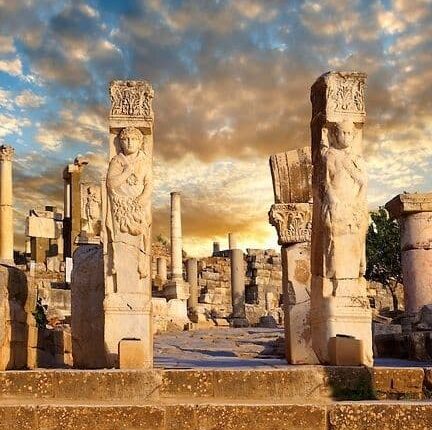
Hercules Gate is located at the beginning of the Curetes Street where was the main street of Ephesus. It was called the Hercules gate because of the relief of Hercules on the pillars.
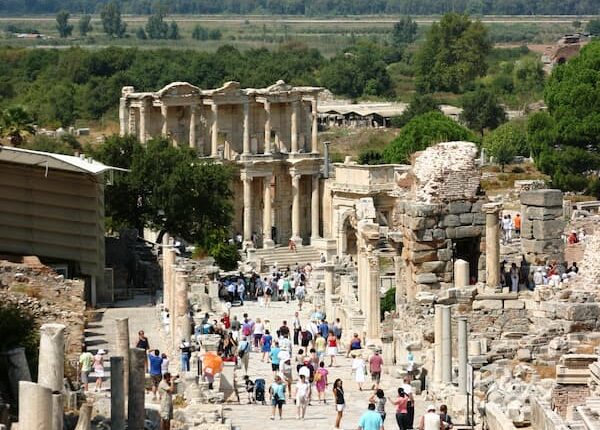
Curetes street is the main street of Ephesus. It starts from Gate of Hercules and ends at the Celcius Library. Shops were on the both side of street. Stoa (shelter, portico) is located in front shops just above the pavement. Along side the street, there are not only shops, also Trajan Fountain, Houses on the Terraces, Scolastica Baths and more are located on it.
House of Virgin Mary is in the boundary of Selcuk Town, Izmir. From Izmir Airport it is about 1,15 minutes away and only 20 minutes away (or 9 Km) from Ephesus. Just before start climbing the Bulbul mountain where the house of Virgin Mary is, You will see a colossal statue of Virgin Mary on the side way. Also, you can over look the ruins of the Ephesus from the location of statue.
Paul VI was the first pope to visit this place in the 1960’s after visiting Izmir. Later, in the 1980’s, during his visit, Pope John-Paul II declared the Shrine of Virgin Mary has a pilgrimage place for Christians. Also muslims who recognize Mary as the mother of one of their prophets visits her house. August 15th ceremony is for commemorate Mary’s Assumption.
